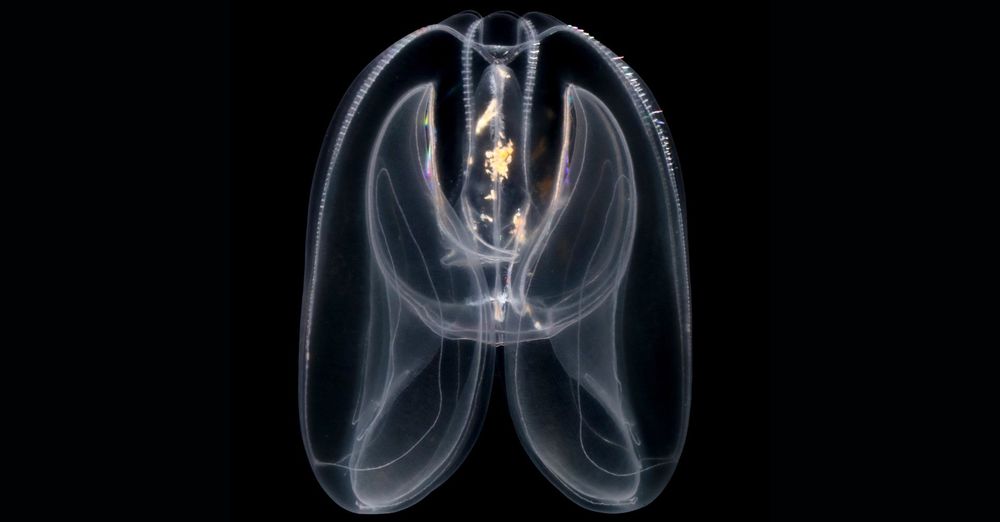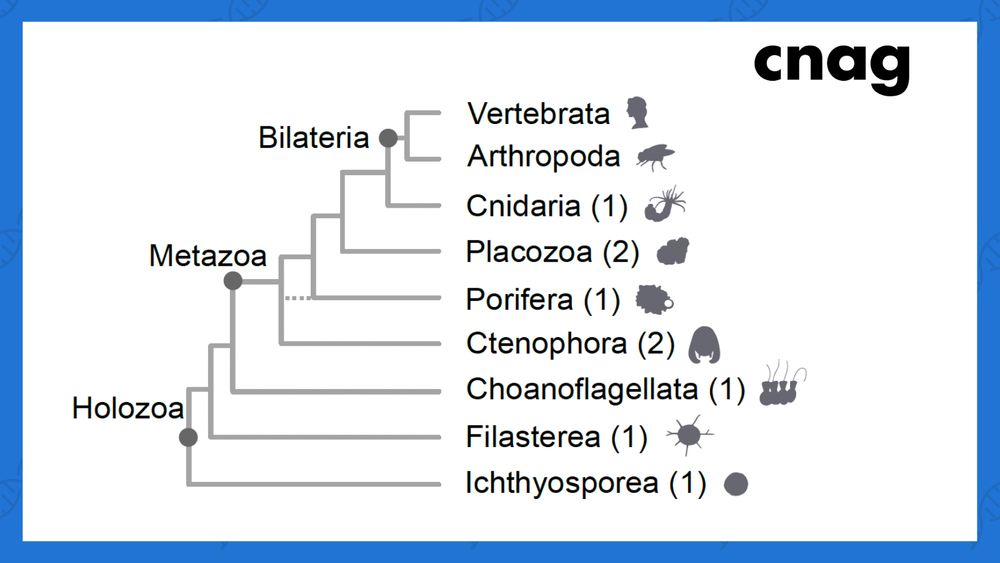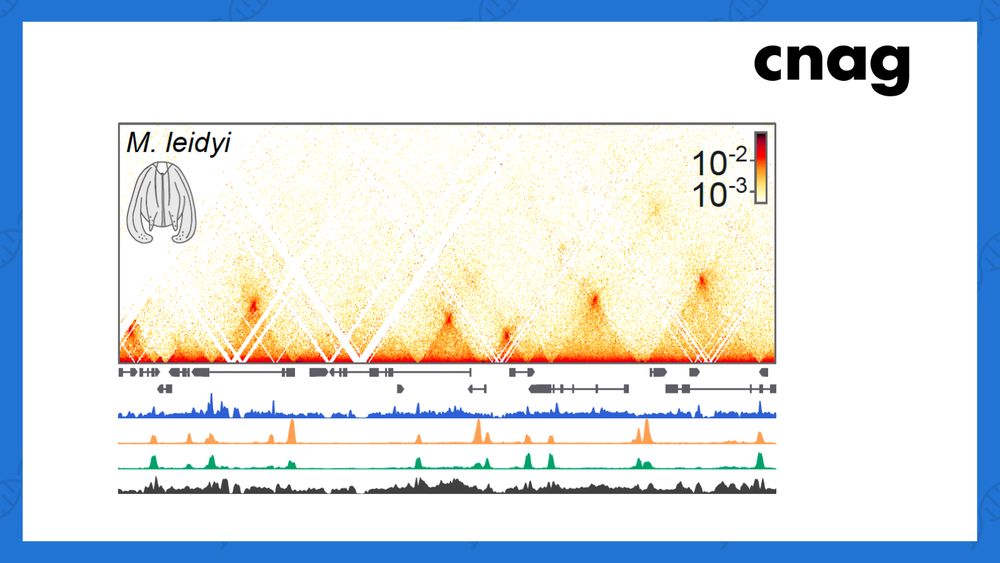- 📢New paper out in @nature.com! 🪼Comb jellies reveal ancient origins of animal genome regulation 🧬Researchers from @crg.eu and CNAG find that the ability to control genes across tens of thousands of DNA letters evolved 650–700 million years ago 📎 www.cnag.eu/news/comb-je... #NaturePublication
- How are genes switched on? 🦠 In the simplest organisms, genes were activated by switches nearby 🐒 Animals later evolved distal regulation—folding DNA so distant regions could switch genes on, enabling complex cells without new genes But... when did distal regulation begin? ⬇️ #GeneRegulation #CNAG
- 🔎 The authors studied genomes from ancient animal lineages—comb jellies (Mnemiopsis leidyi), placozoans, cnidarians, sponges—and single-celled relatives of animals 🔬They used a technique called Micro-C to map how DNA physically folds inside the cells of each of the 11 species #MolecularBiology
- 🔝The researchers found that distal regulation, a key evolutionary innovation, likely originated in a sea creature: the comb jelly! 🧬 This ancient animal folded its DNA in a controlled way, bringing distant DNA regions into contact and enabling complex gene regulation #Evolution #DistalRegulation
- 🪼What comb jellies reveal to us is that distal regulation emerged 150M years earlier than we thought! ⭐️ Another surprising discovery is that comb jellies don’t use the protein CTCF for DNA folding but a similar protein, challenging assumptions in genomic architecture #OpenScience #LifeSciencesMay 7, 2025 15:19
- ➡️ This is a groundbreaking study that reveals new insights into genomic regulation and helps us understand the principles shaping our cells today 🙌Congrats to the CNAG Structural Genomics Group: @ianakim.bsky.social (first author), @encent.bsky.social , and their leader, @mamartirenom.bsky.social



